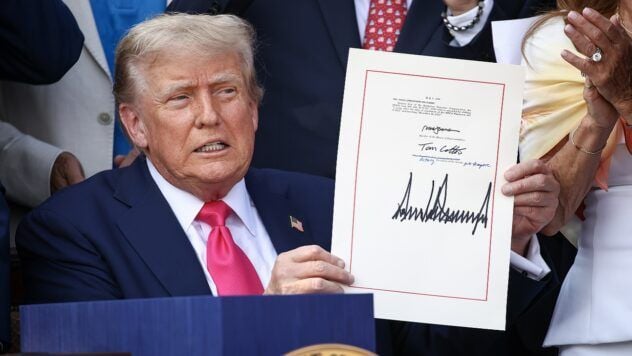
US President Donald Trump has signed his historic “Big Beautiful Bill” on taxes and a possible increase in the debt ceiling.
BBC News reports this.
Trump signs tax bill
The bill enacts key parts of Trump's agenda, including tax cuts, increased defense spending and a crackdown on immigration.
Now watching
Trump has told supporters the bill will boost the U.S. economy, but he now needs to convince skeptical Americans. Recent polls show many disapprove of parts of the tax bill.
At the same time, several members of the Republican Party opposed the legislation because of the growing US national debt, and Democrats warned that the bill would reward the rich and punish the poor.
The 870-page document includes :
- extending the 2017 tax cuts from Trump's first term,
- sharp cuts in spending on Medicaid, the government health insurance program for low-income people and people with disabilities,
- new tax breaks on tip income, overtime and social security,
- increasing the defense budget by $150 billion,
- Biden-era clean energy tax credit cuts,
- $100 billion for Immigration and Customs Enforcement (ICE).
It's worth noting that Trump has been vocal in praising the tax cuts in the bill and dismissing criticism of its impact on social programs like food aid and Medicaid.
Trump praised the additional funding for border security and immigration enforcement.
It's worth noting that House Minority Leader Hakeem Jeffries delayed the final vote in the lower chamber of Congress on Thursday, speaking for nearly nine hours.
He called the bill a serious blow to the health care of the American people and cited testimony from people concerned about its impact. But his speech only delayed the inevitable.
Only two Republicans opposed the law, joining all 212 Democrats.
Thus, Trump's great and beautiful bill passed by a vote of 218 to 214.
Economic growth or increase in public debt
The White House believes that tax breaks will help stimulate economic growth in America. At the same time, many experts fear that this will not be enough to prevent a sharp increase in the budget deficit – the difference between spending and tax revenues. And this will inevitably lead to an increase in the national debt.
A Congressional Budget Office (CBO) analysis shows that the tax cuts could produce a surplus in the first year but then lead to a sharp increase in the deficit.

